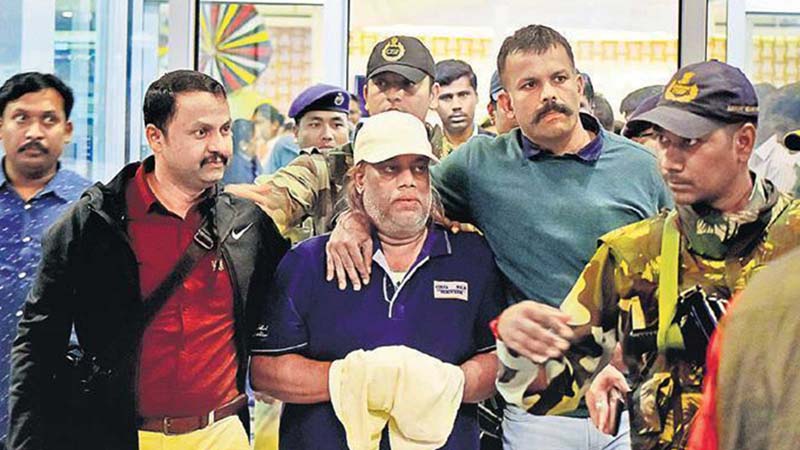“Kya ho raha hai, Saheb?” (What is happening, sir), was the first exchange of words between the notorious underworld don Ravi Pujari and Additional Director General of Police (Law & Order) Amar Kumar Pandey who brought him to justice. This conversation took place soon after the dreaded outlaw was handed over to the Karnataka police team headed by Pandey, by their counterparts in Senegal at the international airport in the West African country.
February 22 was a day of reckoning for Pandey, when he arrested Pujari in Senegal and got him extradited to India. Pandey and his team brought Pujari to Bengaluru on the midnight of February 23/24 in a closely guarded cross-continent operation. Pandey had worked hard for the D-day for 20 months since the time he was tasked with Pujari’s extradition by a former state police chief in July 2018. He worked through a maze of clues; often dead leads that he had hoped would get him to identify Pujari.
“I didn’t know what he looked like. It was like chasing a ghost. Pujari was on the run for more than two decades and his last photograph available was of 1994. There were some photographs of him on the Internet, including the one in a swimming pool. I sieved through the news reports on Pujari andall that was available on him on the Net and began tracking his extortion calls. But soon I hit a wall. Pujari was using Voice over Internet protocol (VoIP) to make extortion calls.
His phone number was not reflected in his calls. Initial investigation showed that he was making calls using SIMs of different countries. He had not used the same SIM for two calls,” narrated Pandey. In December 2018, the officer got an input that his hunt could end in Burkina Faso but by the time he could act on it, Pujari had moved out.
First, we tracked Pujari’s extortion calls: Police official
“Tracking Pujari’s call list had revealed a certain geography from where he was making the extortion calls. That was the first tangible clue on hand. I was sure that he was overseas and hypothetically, in Africa. I started making efforts through the Ministry of External Affairs and reached out to the Indian embassies, and through them, the local agencies, where I suspected Pujari could be hiding. The second input of him being in Senegal got me the man. Based on our inputs the Senegal police arrested him from a salon in Dakar on January 19, 2019. His identity was previously confirmed by matching his fingerprints in the Bala Zalte murder case in Mumbai in 1994 against which there was a Red Corner Notice issued against Pujari with his fingerprints,” said Pandey.
The don had been in judicial custody in Senegal since his arrest. “The process of extradition took time because Pujari had the right to appeal against it. On February 19 he exhausted all his legal options when the Supreme Court of Senegal rejected his extradition plea. On the midnight of February 18 we had boarded the flight on way to Senegal to get Pujari back,” said the police officer.“At the airport, I told Pujari that we were taking him back to India. Tumhara extradition ho gaya hai. (You have been extradited). He was stressed and looked nervous when he was handed over to us. I asked him if he was alright. He was emotional on the flight,” said Pandey.
Pujari was arrested in Senegal on February 22 by Pandey and his select team comprising Sandeep Patil, Joint Commissioner, Crime, Bengaluru City Police, and Siddappa Mallappa Bottelin and Jayaprakash Chandramohan of the Central Crime Branch (CCB). “His extradition is on a bilateral agreement between India and Senegal since we don’t have the extradition treaty with them. That he will not be given capital punishment is one of the caveats,” added Pandey.
Blood dossier to be re-investigated
Pujari’s blood dossier will be re-investigated by the CCB. The first case on hand is the infamous 2007 Shabnam Developers murder case, which was allegedly committed by one of Pujari’s henchmen

